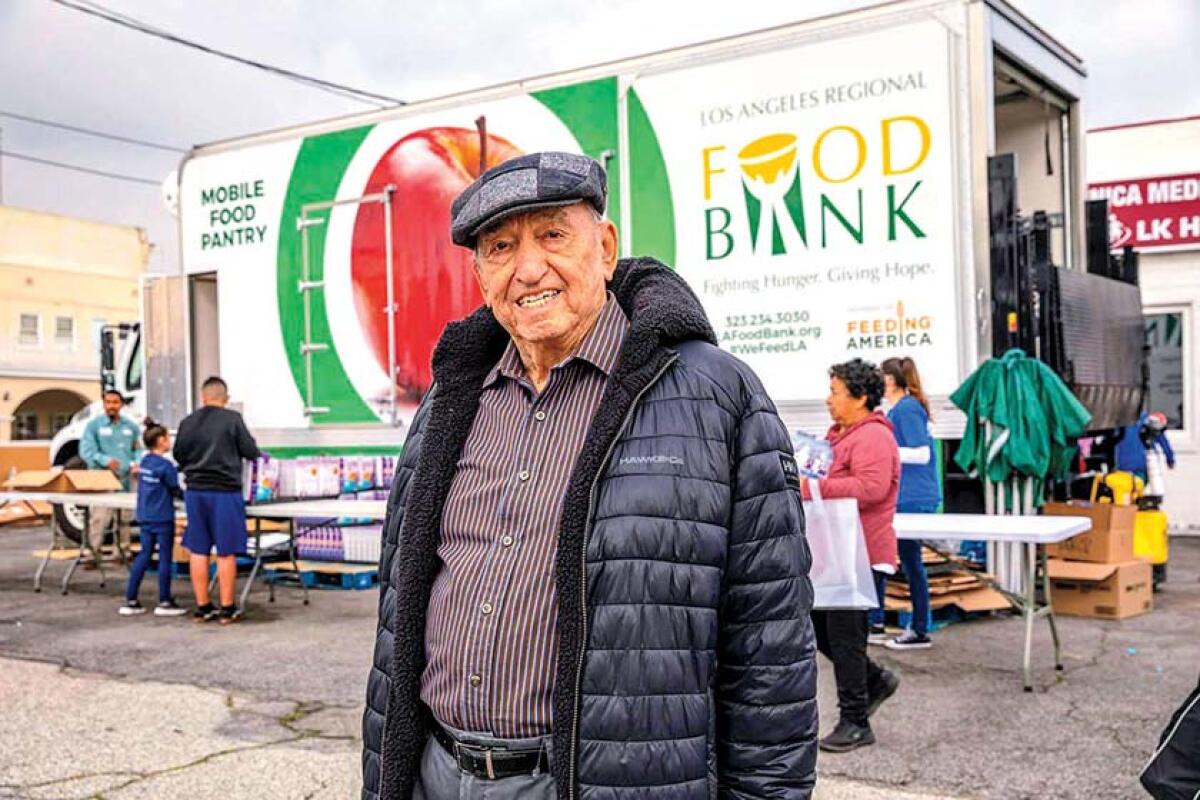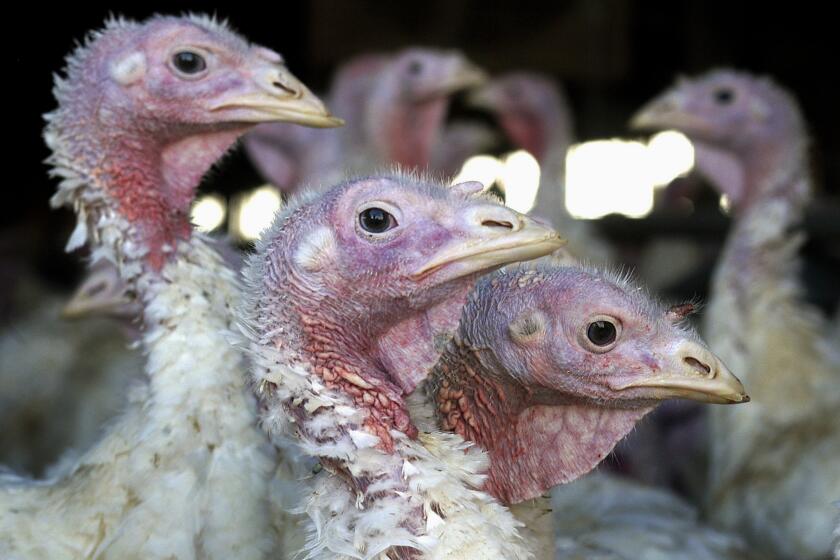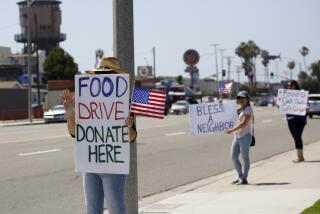Americans are losing the habit of giving. Here’s how to get it back

- Share via
It feels like it’s been Black Friday for weeks now. That’s how long the ads promising incredible savings have been bombarding our ears and eyes. In a couple of days, Cyber Monday will urge us to spend again. Finally, after our wallets have gotten a workout, it will be Giving Tuesday, an effort started in 2012 by two New York nonprofit organizations to remind people to give.
The holiday season that begins with Thanksgiving is also known somewhat less famously as the giving season. Just like for retailers, charities’ income over the next month is crucial to their bottom line for next year.
Approximately 46 million turkeys are slaughtered for Thanksgiving, and this year the suffering of the industrially farmed birds is compounded by the return of avian flu.
But the way Americans are giving is shifting, and that’s a problem for the long-term health of charitable organizations. While philanthropy among wealthy people has strengthened, with overall dollar donations at record highs, the percentage of Americans who give has fallen precipitously this century.
The numbers are particularly low among young adults, says Una Osili, an expert on philanthropy at the Indiana University-Purdue University Indianapolis. The percentage of donors naturally fell off during the Great Recession, she said. And charitable giving numbers continued falling until 2020, when the devastation of the COVID-19 pandemic induced more people to give. That year and 2021 saw record high levels of donations — but that uptick reversed in 2022, probably in part because the crisis had ebbed and inflation was taking a bigger part of people’s incomes.
For post-Thanksgiving weekend meals, these recipes use leftovers from your holiday table and a few pre-purchased add-ins.
The concentration of donations is concerning. Dependence on a relatively small number of people creates an unstable funding situation for charities, Osili says.
Not only are a smaller percentage of people giving, but they are generally giving less of their disposable income. Last year, donors in the U.S. gave an average of 1.7% of their income to charity, the lowest level since 1995, according to a report by the nonprofit Giving USA. And the middle class is no more likely to give than individuals with lower incomes.
The declining participation in charity by ordinary Americans since 2007 comes in part from a rising distrust of institutions. That’s why Americans increasingly give to single-person causes on GoFundMe, even though there is little oversight of how those funds are used.
Our TV critic selects a few holiday specials, movies and series to watch this season, including “The Santa Clauses” Season 2, “Doctor Who” specials, “Hannah Waddingham: Home for Christmas” and more.
The trend among young adults speaks to a more perilous future for charities.
There are a lot of reasons for that low rate, Osili says. For one thing, giving is strongly correlated with creating a settled life in a community. But these days, young Americans are delaying house-buying, marriage and having children. Some of that is a result of student loan debt.
It’s also possible, Osili says, that charities aren’t in tune with how young adults express their charitable inclinations by not, for example, accepting donations through online payment systems. In any case, it’s a situation that needs to be turned around because charitable giving is a habit that forms most strongly in earlier years.
It’s not all bad news. Despite the long decline, Americans are the most generous people in the world, according to the Philanthropy Roundtable, giving more per capita than people in any other country. Special applause to Californians who, despite the wild cost of living in the state, rank seventh in the nation in the percent of their income they give to charity, WalletHub reported this month.
If we want good works to survive, we’ll need to change some of our own habits — starting with giving before the seasonal shopping begins in earnest. One way to do that is to make it part of the Thanksgiving tradition. According to Giving USA, donation is strongly linked to gratitude. The more thankful people are, the more likely they are to give. And Thanksgiving has both words in its name.
Perhaps next Thanksgiving, a box for cash donations could accompany the appetizers so that older people can begin modeling charity in a visible way to even the very youngest members of their family.
Happy Giving.
More to Read
A cure for the common opinion
Get thought-provoking perspectives with our weekly newsletter.
You may occasionally receive promotional content from the Los Angeles Times.









